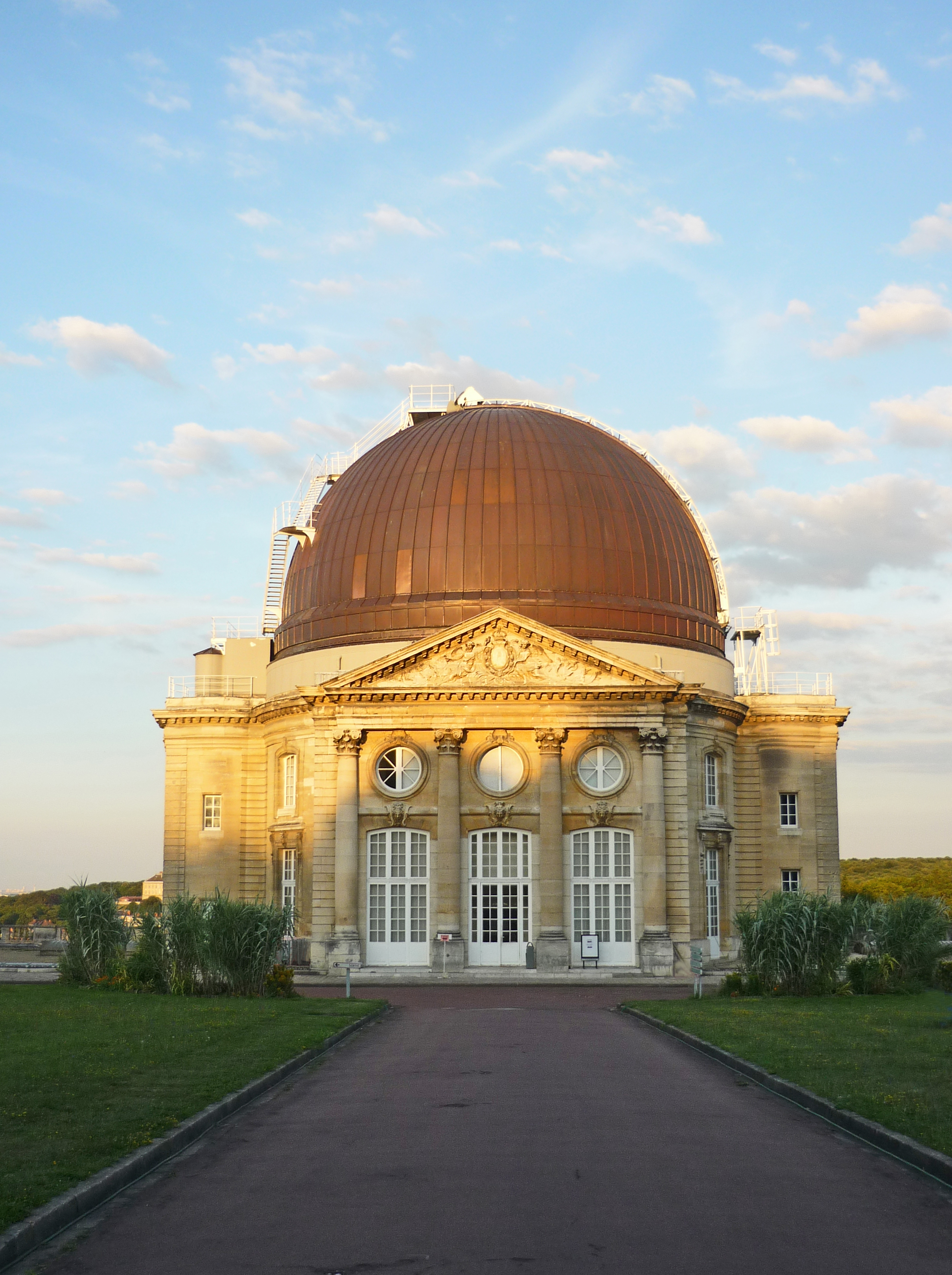|
Arago Telescope
Arago telescope (''Lunette Arago'') is a 38 cm (15 inch) aperture refracting telescope at Paris Observatory, installed in 1857. Francois Arago ordered this telescope from the telescope making firm Lebreours in 1839, and after a protracted development was completed by 1855. The name ''Lunette Arago'' (Arago refractor) is a modern name for the telescope, and other large refractor of Paris observatory, is the one at Meudon. It has gone by a variety of names having to do with various aspects of the telescope, such as its aperture, or location on the East tower of the Paris observatory, or its equatorial mount made by Brunner. In one journal report it was called the 'east equatorial' for example, in another instance '38 cm refractor'. In French language it has been called the ''La lunette équatoriale de 38 cm de l'Observatoire de Paris''. The telescope had an objective lens 14 ''pouces'' across, which is a name for Paris Inches; this works out to about 38 cm (14.96 ... [...More Info...] [...Related Items...] OR: [Wikipedia] [Google] [Baidu] |
Minor Planet
According to the International Astronomical Union (IAU), a minor planet is an astronomical object in direct orbit around the Sun that is exclusively classified as neither a planet nor a comet. Before 2006, the IAU officially used the term ''minor planet'', but that year's meeting reclassified minor planets and comets into dwarf planets and small Solar System bodies (SSSBs).Press release, IAU 2006 General Assembly: Result of the IAU Resolution votes International Astronomical Union, August 24, 2006. Accessed May 5, 2008. Minor planets include asteroids ( |
List Of Largest Optical Refracting Telescopes
Refracting telescopes use a lens to focus light. The largest refracting telescope in the world is the Yerkes Observatory 40 inch (102 cm) refractor, used for astronomical and scientific observation for over a century. The Swedish 1-m Solar Telescope, which has an actual lens diameter of 43 inches, is technically then larger than the lens of the Yerkes, but only 39 inches are clear for the aperture, and is used today for solar observations .The next largest refractor telescopes are the James Lick telescope, and the Meudon Great Refractor. Most are classical great refractors, which used achromatic doublets on an equatorial mount. However, other large refractors include a 21st-century solar telescope which is not directly comparable because it uses a single element non-achromatic lens, and the short-lived Great Paris Exhibition Telescope of 1900. It used a 78-inch (200 cm) Focault siderostat for aiming light into the Image-forming optical system part of the telescope, ... [...More Info...] [...Related Items...] OR: [Wikipedia] [Google] [Baidu] |
List Of Largest Optical Telescopes Of The 19th Century
List of largest optical telescopes in the 19th century, are listings of what were, for the time period of the 19th century large optical telescopes. See List of largest optical telescopes in the 20th century for the 1900s. The list includes various refractor and reflector that were active some time between about 1799 to 1901. The main reflecting technology early on, speculum metal reflected some 2/3 of light, and also had higher maintenance due to tarnishing. Another technology were the 2-element refractors, which were extensively used in 19th century observatories despite their small apertures compared to the largest metal mirror, and later glass telescopes. The technology for silver-coated glass mirrors was developed in the mid-19th century, but was slow to catch on. A major technology advance of this time was the development of astrophotography, and some telescopes were tailored to this application. Also, a wide variety of scientific instruments were developed, such as for spec ... [...More Info...] [...Related Items...] OR: [Wikipedia] [Google] [Baidu] |
Paris Observatory - Arago Dome
Paris () is the capital and most populous city of France, with an estimated population of 2,165,423 residents in 2019 in an area of more than 105 km² (41 sq mi), making it the 30th most densely populated city in the world in 2020. Since the 17th century, Paris has been one of the world's major centres of finance, diplomacy, commerce, fashion, gastronomy, and science. For its leading role in the arts and sciences, as well as its very early system of street lighting, in the 19th century it became known as "the City of Light". Like London, prior to the Second World War, it was also sometimes called the capital of the world. The City of Paris is the centre of the Île-de-France region, or Paris Region, with an estimated population of 12,262,544 in 2019, or about 19% of the population of France, making the region France's primate city. The Paris Region had a GDP of €739 billion ($743 billion) in 2019, which is the highest in Europe. According to the Economist Intelligenc ... [...More Info...] [...Related Items...] OR: [Wikipedia] [Google] [Baidu] |
.jpg)


